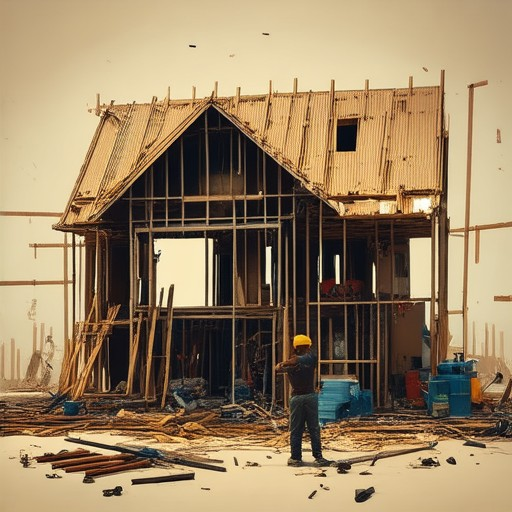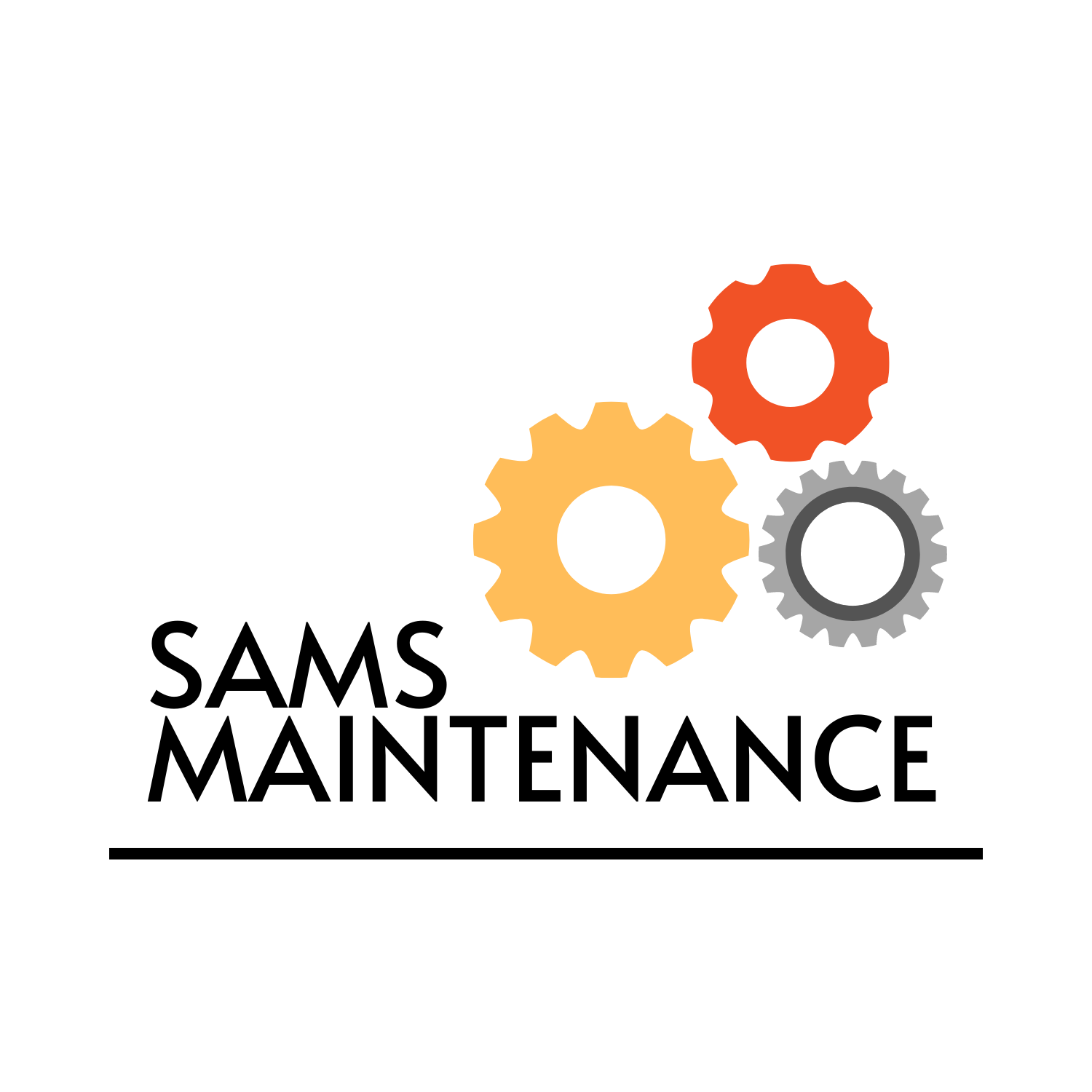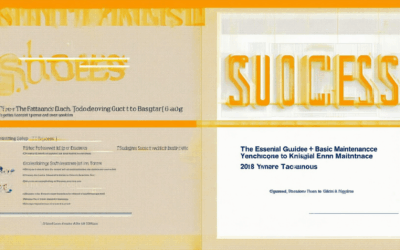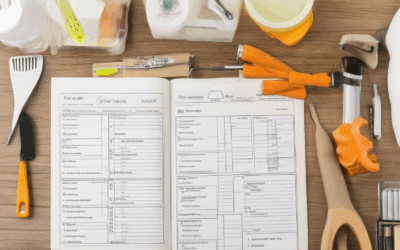Mastering essential home repair skills is a vital capability for every homeowner and DIY enthusiast, enabling you to tackle a wide range of tasks with confidence. Whether you’re fixing a leaky faucet, addressing electrical issues, or planning a full-scale renovation, having a solid understanding of home repair basics is key to saving time and money. This comprehensive guide dives deep into the fundamentals of home repair, offering actionable insights and practical tips to help you navigate everything from basic maintenance to more complex projects. From learning the best tools to use and how to budget for repairs, to exploring the stages of renovation and tax implications, this guide serves as your ultimate resource for improving your home repair expertise. With clear, step-by-step guidance, you’ll gain the knowledge needed to handle home repairs with ease and grace, ensuring your living space remains in top shape for years to come.
Key Takeaways
- Begin with comprehensive research using trusted resources like HomeAdvisor and YouTube for expert guidance.
- Understand fundamentals of materials, tools, and techniques via YouTube’s extensive library.
- Create a clear plan outlining objectives, budget, and timeline, reflecting personal style preferences.
- Budget wisely, setting aside funds for unexpected costs and shopping at Lowe’s or Home Depot for cost-effective solutions.
- Acquire essential tools like drills and saws from Menards for efficient projects.
- Gain expertise through classes and workshops, plus networking opportunities with DIY communities.
- Maintain organization with detailed records of renovation expenses.
- Prioritize safety with protective gear and adherence to OSHA guidelines.
- Follow the structured approach of five renovation stages for successful transformations.
- Enjoy tax benefits by claiming eligible renovation expenses, including energy-efficient upgrades, with proper documentation and professional consultation.

How to Learn Basic Home Repair Skills
To master basic home repair skills, start by identifying the essential tasks you can handle around the house. Begin with manageable projects and gradually progress to more complex ones.
1. Fix Leaky Faucets
Fixing a leaky faucet involves replacing the worn-out washer. Gather an adjustable wrench and a new washer. Follow step-by-step tutorials for guidance. Replace the washer and tighten the faucet to prevent further leaks.
2. Change Car Tires
Check tire pressure using a gauge. Inspect for damage and replace if necessary. Use a jack stand for safety and consult tutorials on proper usage. Ensure the spare tire fits and has good tread before driving.
3. Fix Broken Items
Use adhesives like hot glue guns for wood and fabric glue for cloth items. Sand surfaces to remove rough edges and apply paint. Wear protective gear like gloves and masks to avoid dust inhalation.
4. Handle Plumbing Clogs
Attempt to unclog drains with a plunger. If unsuccessful, use a chemical drain cleaner cautiously. Contact professionals if the blockage persists or if you lack tools.
5. Replace Light Bulbs and Fuses
Replace bulbs by carefully twisting and pulling. Locate the electrical panel and reset fuses if they blow. Exercise caution and consider consulting an expert if unsure.
6. Paint Walls and Ceilings
Choose paint colors carefully by testing samples. Use a paint roller for large areas and a brush for details. Ensure good ventilation and work in sections to avoid messes.
7. Explore DIY Projects
Start with simple projects like fixing furniture. Use safety precautions with tools and appliances. Keep your workspace tidy to enhance efficiency.
8. Seek Training Resources
Enroll in local workshops or online courses for hands-on learning. Utilize online forums and communities for support and advice from experienced learners.
9. Prioritize Safety
Review fire extinguisher usage and gas line procedures. Maintain a first aid kit nearby for minor injuries during projects.
By starting small and seeking reliable resources, you can confidently acquire essential home repair skills, boosting your independence and saving costs over time.
Most Important Skills for a Handyman
A skilled handyman possesses a diverse set of abilities, enabling them to tackle a wide range of home repair and improvement projects. Here are the key skills essential for a successful handyman:
- Carpentry Skills : Proficiency in woodworking, including assembling furniture, repairing wooden structures, and constructing or demolishing walls.
- Electrical Knowledge : Ability to install, repair, and troubleshoot electrical systems, including wiring, switches, and circuit breakers.
- Plumbing Skills : Expertise in fixing leaks, unclogging drains, and installing or replacing plumbing fixtures.
- Painting and Wallpapering : Skill in applying paint, stain, and wallpaper, ensuring smooth finishes and proper preparation of surfaces.
- Roofing and Guttering : Knowledge of roof repair, gutter installation, and chimney maintenance to protect the home from weather damage.
- Furniture Assembly : Ability to assemble and disassemble furniture, ensuring proper installation and safety standards.
- Tool Proficiency : Expertise in using hand tools, power tools, and specialized equipment for various tasks.
- Appliance Repair : Skill in diagnosing and repairing household appliances such as HVAC systems, refrigerators, and dishwashers.
- Window and Door Installation : Experience in installing, repairing, or replacing windows and doors to enhance home security and energy efficiency.
- Landscape and Hardscape Work : Knowledge of lawn care, planting, and hardscape construction, including patios, decks, and retaining walls.
- Building Code Awareness : Understanding of local building codes and regulations to ensure safe and compliant repairs and installations.
- Problem-Solving Skills : Ability to adapt to unique challenges and find creative solutions to complete tasks efficiently.
- Attention to Detail : Precision in completing tasks to ensure durability and functionality, minimizing the need for future repairs.
- Communication Skills : Clear and effective communication to explain repairs, provide recommendations, and manage client expectations.
- Time Management : Ability to prioritize tasks and meet deadlines while working independently or as part of a team.
- Safety Awareness : Knowledge of safety protocols to prevent accidents and ensure a secure working environment.
- Product Knowledge : Familiarity with the best tools, materials, and products available for various home repair tasks.

How Much Do Home Repairs Cost?
Home repair costs vary significantly depending on the type of repair, the materials needed, and the scope of the work. Here’s a breakdown of common home repair expenses:
- Small Repairs: – Faucet repair: $100-$300 – Light switch replacement: $50-$150 – Ceiling fan installation: $150-$400
- Medium Projects: – Installing new flooring: $500-$3,000 – Painting walls: $200-$1,000 – Deck installation: $700-$5,000
- Major Renovations: – Kitchen remodel: $10,000-$50,000 – Bathroom remodel: $8,000-$30,000 – Garage door installation: $1,000-$4,000
- Appliance Replacement: – HVAC system installation: $5,000-$12,000 – Water heater replacement: $800-$14,000
- Electrical and Plumbing Repairs: – Rewiring a house: $10,000-$25,000 – Pipe replacement: $150-$600
Labor costs typically account for 20%-50% of the total expense, depending on the complexity of the task and the contractor’s rates. For precise estimates, consult local professionals or use online cost calculators.

How to Learn About Home Renovation
Learning about home renovation involves a combination of research, planning, and hands-on practice. Here’s a step-by-step guide to getting started:
- Start with Research:** – Begin by reading books, watching tutorials, or exploring online resources. Websites like HomeAdvisor and IKEA offer detailed guides and inspiration for various home renovation projects.
- Understand the Basics:** – Familiarize yourself with fundamental concepts like materials, tools, and techniques. Platforms like YouTube have extensive video libraries covering home improvement topics.
- Plan Your Projects:** – Identify your goals and priorities. Whether it’s a kitchen remodel or a bathroom upgrade, having a clear plan helps you stay focused and organized. Create a checklist to track progress.
- Budget Wisely:** – Set aside money for unexpected costs. Tools and materials can be expensive, so research prices and compare options. Lowes and Home Depot are great places to find supplies.
- Get the Right Tools:** – Invest in essential tools like a drill, saw, and measuring tape. These tools are indispensable for any home renovation project. Check out Menards for affordable tool options.
- Learn from Experts:** – Take classes or workshops offered by local hardware stores or community colleges. Networking with other DIY enthusiasts can provide valuable insights and tips.
- Stay Organized:** – Keep records of receipts, contracts, and change orders. Proper documentation is crucial for tax purposes and for future reference if you decide to sell your home.
- Take Safety Precautions:** – Wear protective gear like gloves and goggles. Secure the area to prevent accidents. OSHA provides guidelines for safe working conditions.
What Are the 5 Stages of Home Renovation?
Here’s a breakdown of the five primary stages involved in a typical home renovation project:
- Planning and Design :
- Begin by assessing your space and determining what changes align with your goals.
- Create a plan that outlines objectives, budget, and timeline.
- Select design elements, colors, and materials that reflect your style.
- Use tools like blueprints or 3D renderings to visualize the outcome.
- Plan for permits and approvals, especially for structural changes.
- Preparation :
- Protect your belongings by removing furniture and securing loose items.
- Demolish or remove existing features that aren’t part of the renovation.
- Install temporary structures like scaffolding or drop cloths.
- Set up a waste management system for debris removal.
- Execution :
- Start with the most impactful work, such as installing new flooring or updating plumbing systems.
- Work with contractors or DIY guides to execute each phase efficiently.
- Ensure quality control by inspecting completed work.
- Address any unexpected issues promptly to stay on track.
- Finishing Touches :
- Add decorative elements like lighting, fixtures, and artwork.
- Complete tasks like painting walls and applying finishes.
- Test all systems to ensure everything functions properly.
- Clean and organize the space to prepare for occupancy.
- Post-Renovation Review :
- Conduct a final walkthrough to verify all goals have been met.
- Make any necessary adjustments or touch-ups.
- Document the finished project for future reference.
By following these stages, you can transform your home into a more functional and aesthetically pleasing space. Whether you’re tackling a small project or a full-scale overhaul, careful planning and execution are key to success.

Can I Deduct Home Renovations on My Taxes?
Whether you can deduct home renovations on your taxes depends on several factors:
- Deductible Expenses: Certain home renovations may qualify as tax deductions. These typically include costs associated with repairs, improvements that increase the home’s value, and certain upgrades.
- Mortgage Interest: If you financed your renovation through a mortgage, the interest paid on that portion may be deductible as itemized medical expenses on Schedule A .
- Energy-Efficient Upgrades: Installing energy-efficient features in your home may qualify for tax credits under the Nonbusiness Energy Credit on Form 8828 .
- Timing and Completion: Most deductions require the renovation to be completed by the end of the tax year. If work isn’t finished, you may need to wait until it’s completed to claim the deduction.
- Depreciation: In cases involving rental properties or second homes, depreciation may apply to certain renovation costs.
- State-Specific Rules: Tax laws vary by state, so check with your local tax authority for additional requirements.
For maximum benefit, ensure you keep detailed records of all renovation expenses and consult a tax professional for personalized advice. Proper documentation is crucial to support your claims.




0 Comments